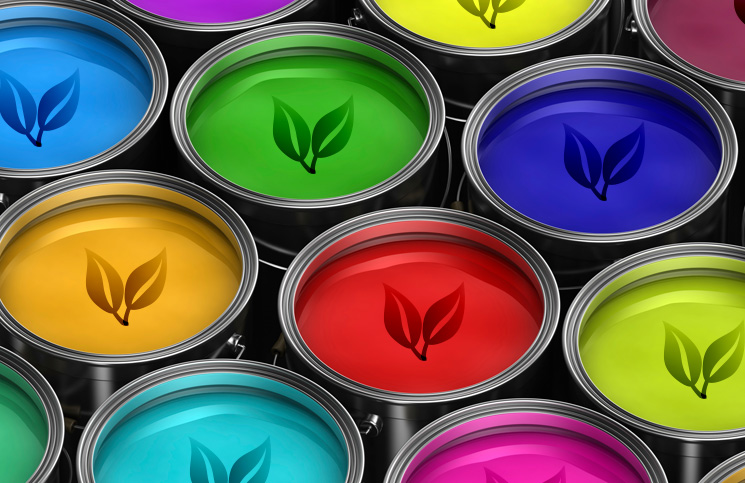Materials and Sustainability
For a long time, the painting industry used harmful components that were harmful for the environment, the atmosphere and the animal world due to alcohol content, aliphatic compounds and xylene(EIL news, n.d.). In this post I will list possible eco-media, such as varieties of eco paper, eco ink and eco clay.
My project includes 9-15 panels of portraits that by plan, made of wood. There are good types of eco substitutes for wood. For example: reclaimed or reused wood, fiberboard from recycled wood waste, bamboo, hemp and boards from recycled paper (Schwartz, 2015). The yearly production of wood-based composites was projected to reach 357 million m3 globally in 2019, indicating a 268% rise from 1980 levels. Using alternative raw materials, recycling waste wood-based panels at the end of their life cycle, and using waste lignocellulosic materials are some ways to lessen the rising use of wood raw materials.(Antov et al., 2021) Fiberboard is a good choice since it is made of wood waste but when put together into a workable board is sturdy, works and looks just like wood.
Image from Claypaint - Earthborn Paints
For my sculpture, I will use different media for the base, but the main material will be clay. Clay is an eco-friendly material by itself, but it is worth noting that clay has a wide range of types. For example, the most popular types of clay are Terracotta, Earthenware, Porcelain. The common feature of all types of clay is their environmental friendliness, natural and durability (Pellant, 2017). Clay itself is an important material for the field of sculpting because of its plasticity, which allows you to achieve your goals with high accuracy. Clay is divided into air-drying, water-based, oil-based, but these types are not good for big sculpture projects, because of their fragility and own nuances. However, they are quite good for small projects. Accroding to Ceramic Arts Network Daily (2024), the best clay for this project in theory is Grogged clay as it is "better at supporting itself and ideal for large sculptures, while finer clays are good for small-scale work".
References:
Schwartz, J. (2015). Alternatives to Wood | Stories | WWF. [online] World Wildlife Fund. Available at: https://www.worldwildlife.org/stories/alternatives-to-wood [Accessed 20 May 2024].
Antov, P., Krišt’ák, L., Réh, R., Savov, V. and Papadopoulos, A.N. (2021). Eco-Friendly Fiberboard Panels from Recycled Fibers Bonded with Calcium Lignosulfonate. Polymers, [online] 13(4), p.639. doi:https://doi.org/10.3390/polym13040639.
Metcalf, H. (2021). Eco Paints: A Guide to Healthier Home Decorating. [online] Homebuilding & Renovating. Available at: https://www.homebuilding.co.uk/advice/eco-paints [Accessed 20 May 2024].
Burger, N. (2023). Recycled Art - Environmental Art Made from Trash. [online] artfilemagazine – Your Online Art Source. Available at: https://artfilemagazine.com/recycled-art/#:~:text=The%20use%20of%20trash%20in%20art%20was%20driven. [Accessed 20 May 2024].
Earthborn Paints. (n.d.). Claypaint. [online] Available at: https://earthbornpaints.co.uk/paint/claypaint/ [Accessed 12 May 2024].
Pellant, Mark. “Benefits of Building with Clay, plus Examples – Koru Architects.” Koru, 22 Mar. 2017, koruarchitects.co.uk/building-with-clay-super-natural-materials#:~:text=Clay%20also%20has%20significant%20health%20benefits%20over%20other. [Accessed 13 May 2024.]
Ceramic Arts Network Daily. (2024). Clay Sculpture Techniques and Tips. [online] Available at: http://ceramicartsnetwork.org/daily/article/A-Couple-of-Cool-Clay-Sculpture-Techniques#:~:text=Grogged%20clay%20is%20better%20at%20supporting%20itself%20and. [Accessed 12 May 2024].




Follow this up with showing us how you are EXPERIMENTING with materials as we discussed in your last tutorial - the more experimentation you do, the more you understand how your materials work and how you can use them effectively in your outcomes - THIS IS WHY WE DO DEVELOPMENT WORK!!!!
ReplyDelete